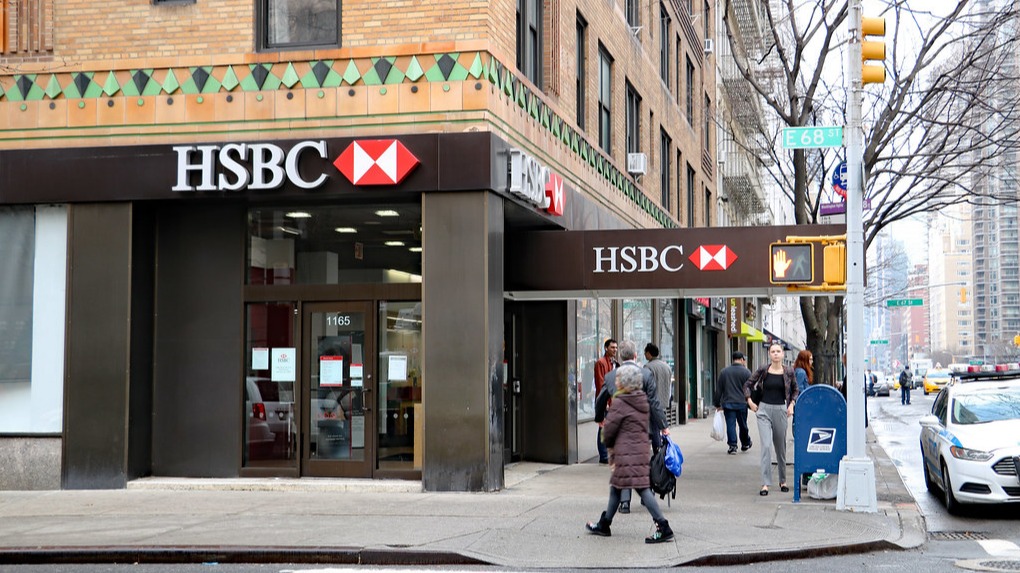HSBC and General Atlantic Warn of AI Spending Frenzy Outpacing Real Returns
HSBC and General Atlantic Warn of AI Spending Frenzy Outpacing Real Returns
By
Leah Rosenfeld
Last updated:
November 4, 2025
First Published:
November 4, 2025

Photo: FStech
At a time when global corporations are racing to pour trillions into artificial intelligence, top financial leaders are raising red flags. HSBC CEO Georges Elhedery and General Atlantic CEO William Ford both warned on Tuesday that the scale of AI-related capital expenditure is far outpacing near-term revenue potential — signaling an unsustainable mismatch between AI hype and economic reality.
Speaking at the Global Financial Leaders’ Investment Summit in Hong Kong, Elhedery cautioned that while the need for advanced computing power is undeniable, current revenue profiles and adoption rates simply don’t justify the unprecedented levels of spending taking place across industries.
“These are five-year trends,” Elhedery explained. “The real revenue benefits and readiness to pay for AI solutions will likely come much later than investors expect.”
A $3 Trillion Infrastructure Surge
The scale of investment in artificial intelligence infrastructure is staggering. Morgan Stanley projected in July that global data center capacity will expand sixfold over the next five years, requiring an estimated $3 trillion in investment by 2028.
Meanwhile, McKinsey & Co. estimates that by 2030, data centers capable of handling AI processing will demand an eye-watering $5.2 trillion in capital expenditure, compared to just $1.5 trillion for traditional IT facilities.
This explosive infrastructure buildout is being driven by Big Tech’s escalating appetite for computing power. Alphabet, Meta, Microsoft, and Amazon together expect to spend over $380 billion on capital expenditures this year alone — an increase of more than 30% from 2023.
And in a record-breaking move, OpenAI has reportedly announced $1 trillion in infrastructure partnerships with industry giants like Nvidia, Oracle, and Broadcom, marking one of the most ambitious technology investment plans ever seen.
The Patience Problem: When Revenue Lags Behind Hype
Despite the enthusiasm, both Elhedery and Ford argue that the economic payoff from AI will take much longer to materialize than investors anticipate.
Elhedery emphasized that consumers are not yet ready to pay the premium prices required to sustain such high capital costs, and businesses will remain cautious as productivity gains will take years, not months, to emerge.
Ford echoed that sentiment, describing AI as a “10- to 20-year play.” He compared the current boom to transformative historical technologies like railroads and electricity — innovations that revolutionized industries but took decades to translate into economic returns.
“You’re betting on a broad-based technology that will reshape the economy over time,” Ford said. “But in the early years, it’s extremely hard to predict where the real winners will be.”
A Warning Against “Irrational Exuberance”
Ford also cautioned that the AI investment rush could lead to capital misallocation and overvaluation, echoing concerns reminiscent of the dot-com bubble.
“There’s an element of irrational exuberance in today’s market,” he said. “People are paying upfront for opportunities that may take decades to unfold. It’s a capital-intensive sector, and not every investment will pay off.”
Both executives stressed that while artificial intelligence represents a historic technological shift, the timing and scale of financial returns remain uncertain.
The Bigger Picture: Balancing Innovation and Caution
For now, the global AI race shows no signs of slowing down. From chipmakers like Nvidia to cloud providers and software firms, nearly every major tech player is doubling down on AI-driven infrastructure.
Yet the remarks from Elhedery and Ford serve as a crucial reminder: while AI may be the future of productivity and innovation, the path to profitability will likely be a long and volatile one.
Investors and corporations alike will need to strike a delicate balance — staying at the forefront of technological progress while avoiding the pitfalls of overconfidence and short-term speculation.
Popular articles
Subscribe to unlock premium content
How Adults Are Paying to Experience Silent Daylong Festivals for Mindfulness

The Rise of Ultra-Personalized Scent Memory Experiences Using Olfactory Therapy

Why Some Millennials Are Paying for One-Day Luxury Survival Challenges in Nature

How Adults Are Paying to Experience Silent Daylong Festivals for Mindfulness

The Rise of Ultra-Personalized Scent Memory Experiences Using Olfactory Therapy

How Adults Are Paying to Experience Silent Daylong Festivals for Mindfulness







.png)

